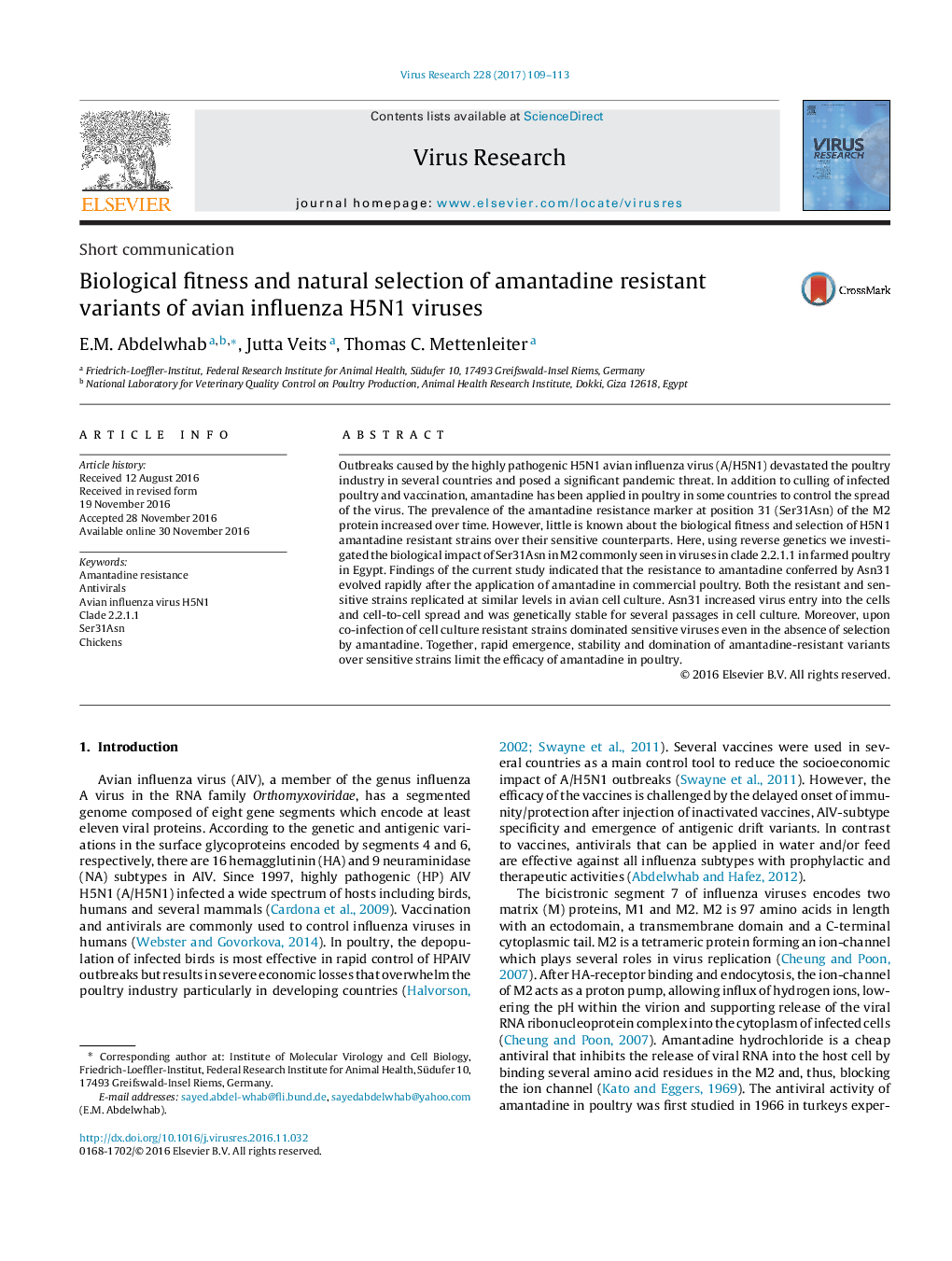| Article ID | Journal | Published Year | Pages | File Type |
|---|---|---|---|---|
| 5675441 | Virus Research | 2017 | 5 Pages |
â¢Ser31Asn, adamantine resistance marker, in H5N1 evolved rapidly after amantadine application.â¢Resistant variants replicated as well as sensitive strains in avian and mammal cell culture.â¢Resistant variants were faster to enter the cell and spread from cell-to-cell.â¢Resistant variants were stable and dominated sensitive strains even in the absence of amantadine.
Outbreaks caused by the highly pathogenic H5N1 avian influenza virus (A/H5N1) devastated the poultry industry in several countries and posed a significant pandemic threat. In addition to culling of infected poultry and vaccination, amantadine has been applied in poultry in some countries to control the spread of the virus. The prevalence of the amantadine resistance marker at position 31 (Ser31Asn) of the M2 protein increased over time. However, little is known about the biological fitness and selection of H5N1 amantadine resistant strains over their sensitive counterparts. Here, using reverse genetics we investigated the biological impact of Ser31Asn in M2 commonly seen in viruses in clade 2.2.1.1 in farmed poultry in Egypt. Findings of the current study indicated that the resistance to amantadine conferred by Asn31 evolved rapidly after the application of amantadine in commercial poultry. Both the resistant and sensitive strains replicated at similar levels in avian cell culture. Asn31 increased virus entry into the cells and cell-to-cell spread and was genetically stable for several passages in cell culture. Moreover, upon co-infection of cell culture resistant strains dominated sensitive viruses even in the absence of selection by amantadine. Together, rapid emergence, stability and domination of amantadine-resistant variants over sensitive strains limit the efficacy of amantadine in poultry.
Graphical abstractDownload high-res image (118KB)Download full-size image
